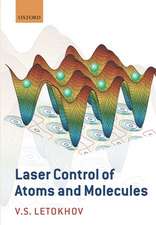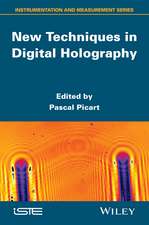The Biology of Echinostomes: From the Molecule to the Community
Editat de Bernard Fried, Rafael Toledoen Limba Engleză Hardback – 12 noi 2008
The application of novel techniques is moving the echinostomes to the frontline of parasitology in fields such as systematics, immunobiology in vertebrate and invertebrate organisms and proteomics among others. The Biology of Echinostomes demonstrates the application of new techniques to a group of trematodes that may serve to obtain information of great value in parasitology and general biology. The book includes basic topics, such as biology and systematics, as well as more novel topics, such as immunobiology, proteomics, and genomics of echinostomes. The authors of each chapter emphasize their content with: (i) the most novel information obtained; (ii) analysis of this information in a more general context (i.e. general parasitology); and (iii) future perspectives in view of the information presented. The subjects are analyzed from a modern point of view, considering aspects such as applications of novel techniques and an analysis of host-parasite interactions.
| Toate formatele și edițiile | Preț | Express |
|---|---|---|
| Paperback (1) | 946.87 lei 6-8 săpt. | |
| Springer – 30 sep 2010 | 946.87 lei 6-8 săpt. | |
| Hardback (1) | 951.29 lei 6-8 săpt. | |
| Springer – 12 noi 2008 | 951.29 lei 6-8 săpt. |
Preț: 951.29 lei
Preț vechi: 1160.10 lei
-18% Nou
Puncte Express: 1427
Preț estimativ în valută:
182.02€ • 190.56$ • 150.62£
182.02€ • 190.56$ • 150.62£
Carte tipărită la comandă
Livrare economică 05-19 aprilie
Preluare comenzi: 021 569.72.76
Specificații
ISBN-13: 9780387095769
ISBN-10: 0387095764
Pagini: 333
Ilustrații: XI, 333 p. 40 illus.
Dimensiuni: 155 x 235 x 23 mm
Greutate: 0.61 kg
Ediția:2009
Editura: Springer
Colecția Springer
Locul publicării:New York, NY, United States
ISBN-10: 0387095764
Pagini: 333
Ilustrații: XI, 333 p. 40 illus.
Dimensiuni: 155 x 235 x 23 mm
Greutate: 0.61 kg
Ediția:2009
Editura: Springer
Colecția Springer
Locul publicării:New York, NY, United States
Public țintă
ResearchCuprins
Echinostomes: systematics and life cycles.- Echinostomes and snails: exploring complex interactions..- Echinostomes in the second intermediate host.- Echinostomes in the definitive host: a model for the study of host-parasite relationships..- Maintenance, cultivation, and excystation of echinostomes: 2000-2007.- Echinostomes in the wild.- Echinostomes in humans.- Immunology and pathology of echinostome infections in the definitive host..- Echinostomes: genomics and proteomics.- Studies of echinostomes using chromatography and atomic spectrometry..- Effects of environmental change on helminth infections in amphibians: exploring the emergence of Ribeiroia and Echinostoma infections in North America..- Concurrent infections of echinostomes with helminths and protozoans.- Use of Echinostoma spp. in studies on chemotherapy and metabolic profiling..
Recenzii
From the reviews:“This multi-authored monograph is the second book within the last decade that focuses on ‘echinostomes’ as experimental models. … All chapters follow a standard format with helpful subtitles … . The production quality of the monograph is generally good … . contains a wealth of information predominantly on Echinostoma spp. and … represents a valuable resource. The monograph will unquestionably be consulted by the aficionados … .” (Aneta Kostadinova, Parasites & Vectors, November, 2009)
Textul de pe ultima copertă
The Biology of Echinostomes presents the echinostomes in the context of modern parasitology and shows applications of new methodologies and concepts to a group of trematodes that may be useful to obtain information of great value in both parasitology and general biology. Several chapters cover the research and literature on such echinostome-like trematodes as Ribeiroia spp. Emphasis is placed on recent advances and gaps in knowledge that must be filled to determine the importance of this group of digeneans as experimental models. This is critical to gain a full understanding of the potential role of echinostomes in the field of experimental parasitology. All chapters are covered from a modern point of view, considering matters such as the applications of novel techniques and analysis of data in the context of host-parasite interactions. The Biology of Echinostomes is an ideal volume for researchers and advanced students concentrating on echinostomes as experimental models.
Caracteristici
Developed by the top researchers in Echinostome biology Up-to-date content provides insights into parasite biology and parasite-host interactions Presents the Echinostome for use as a model organism for parasitic infections













